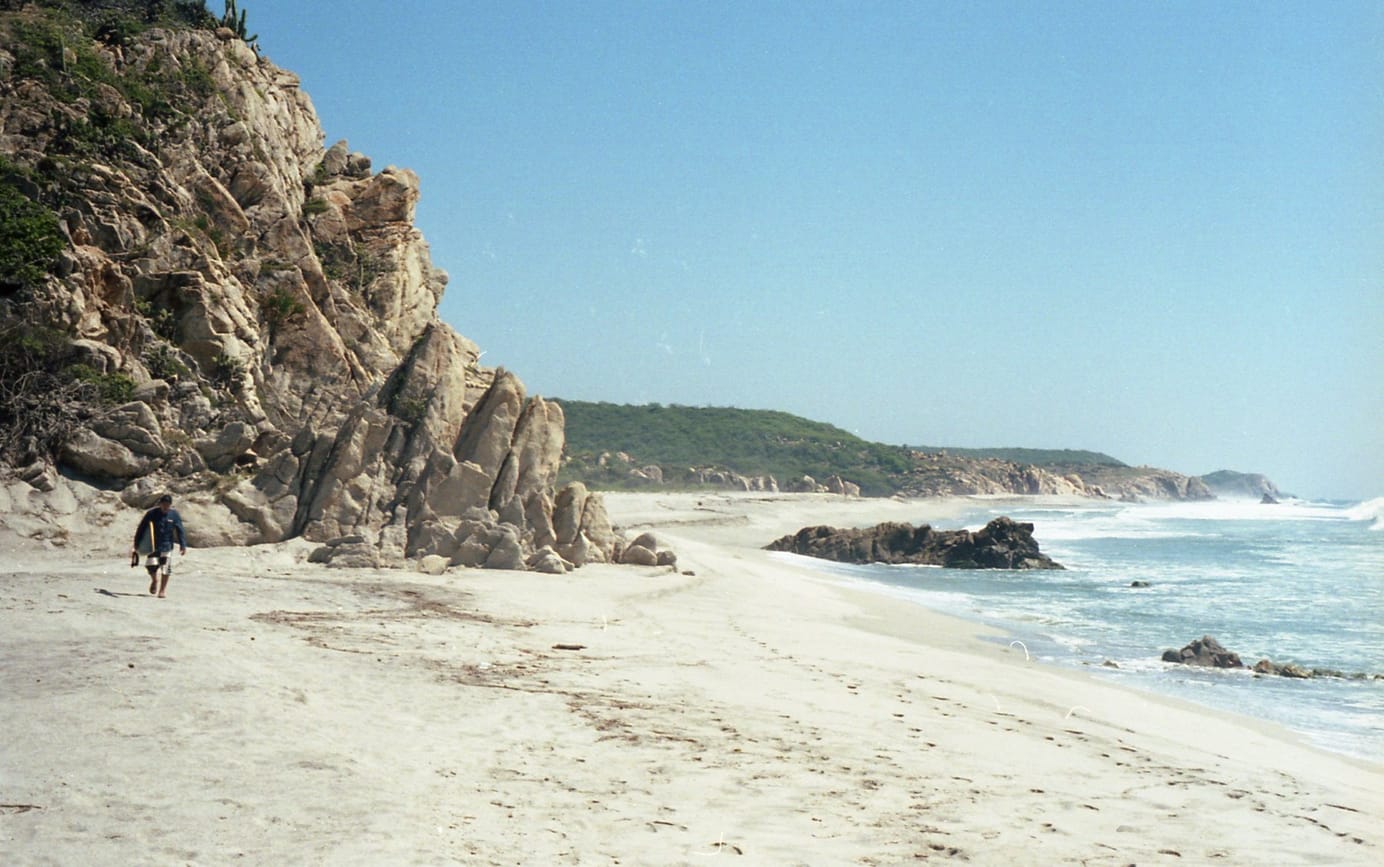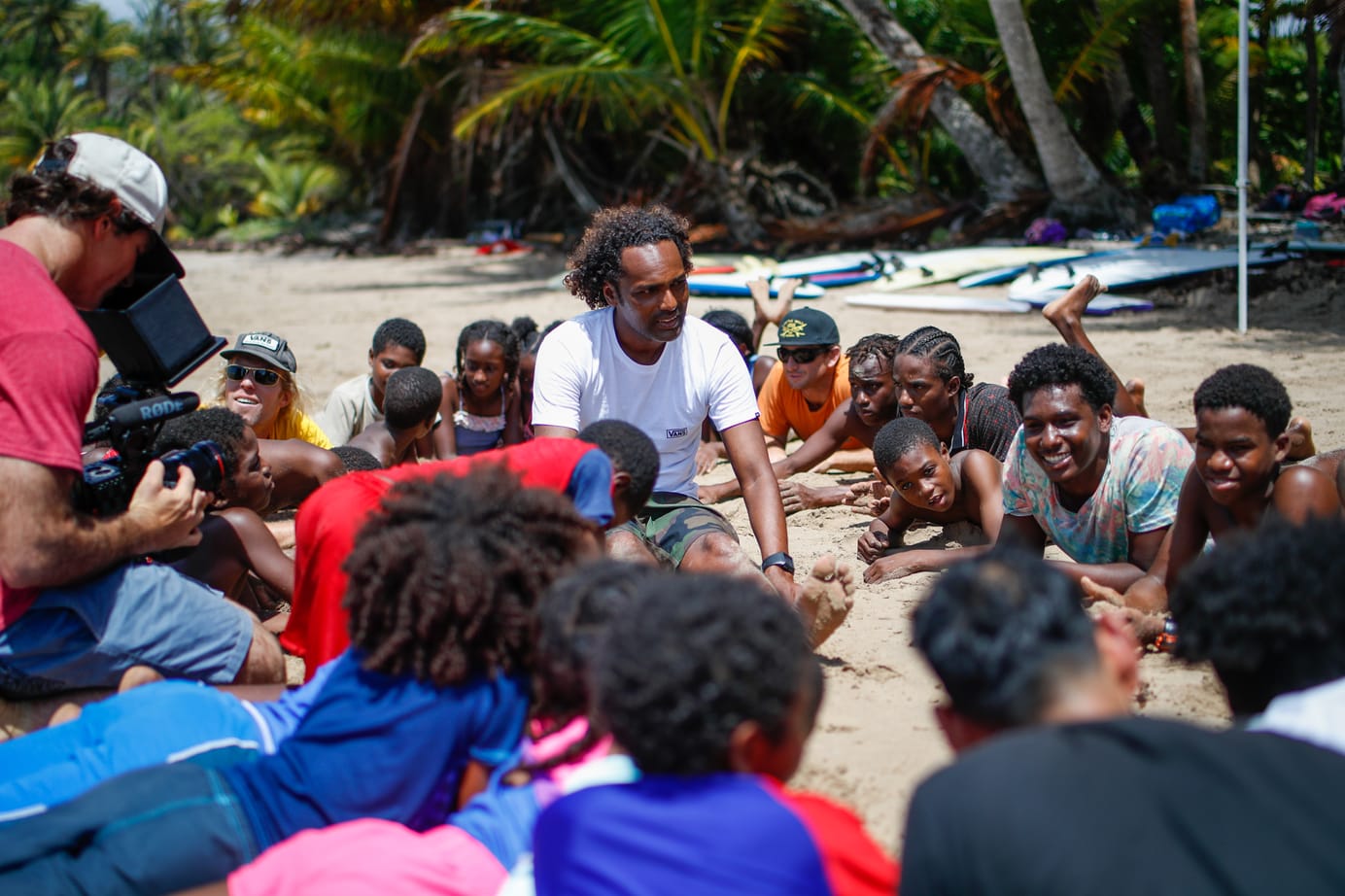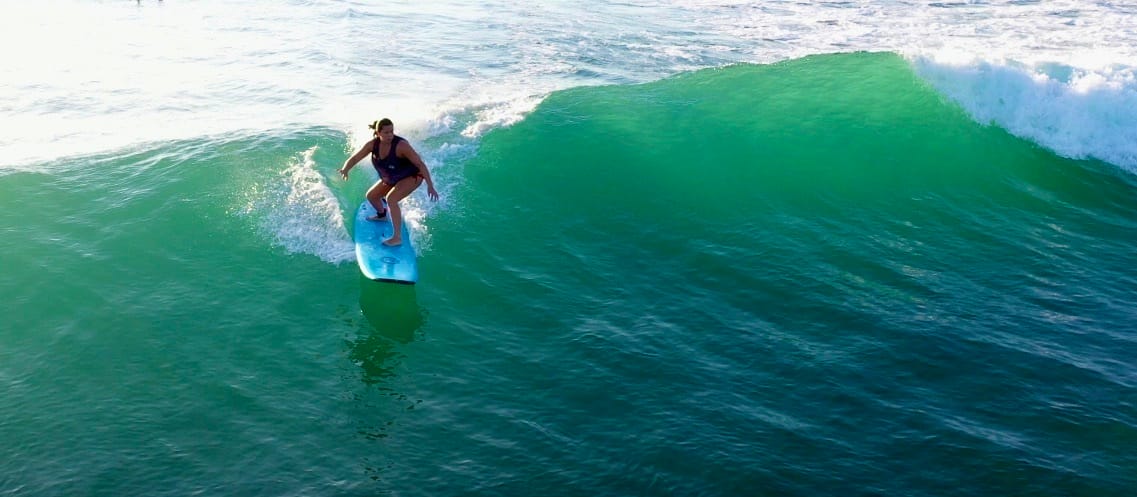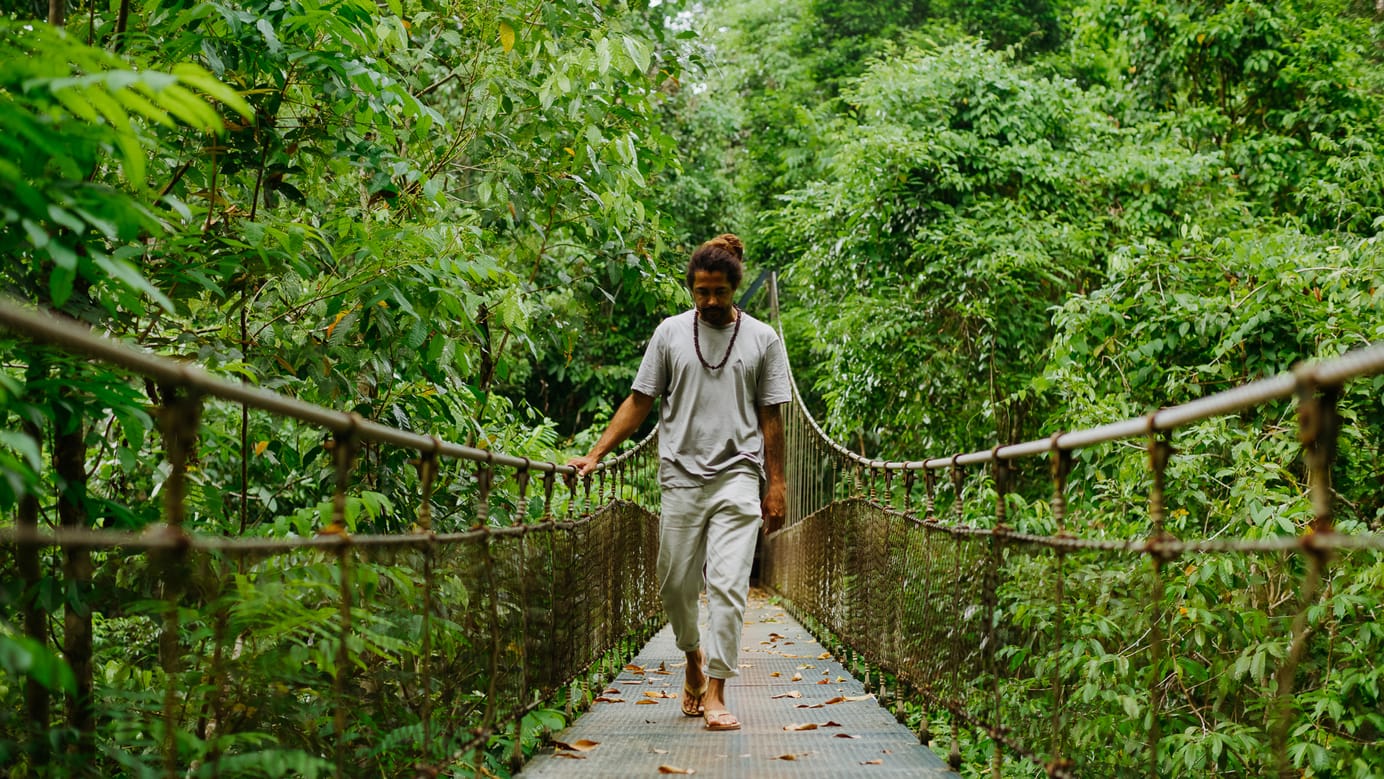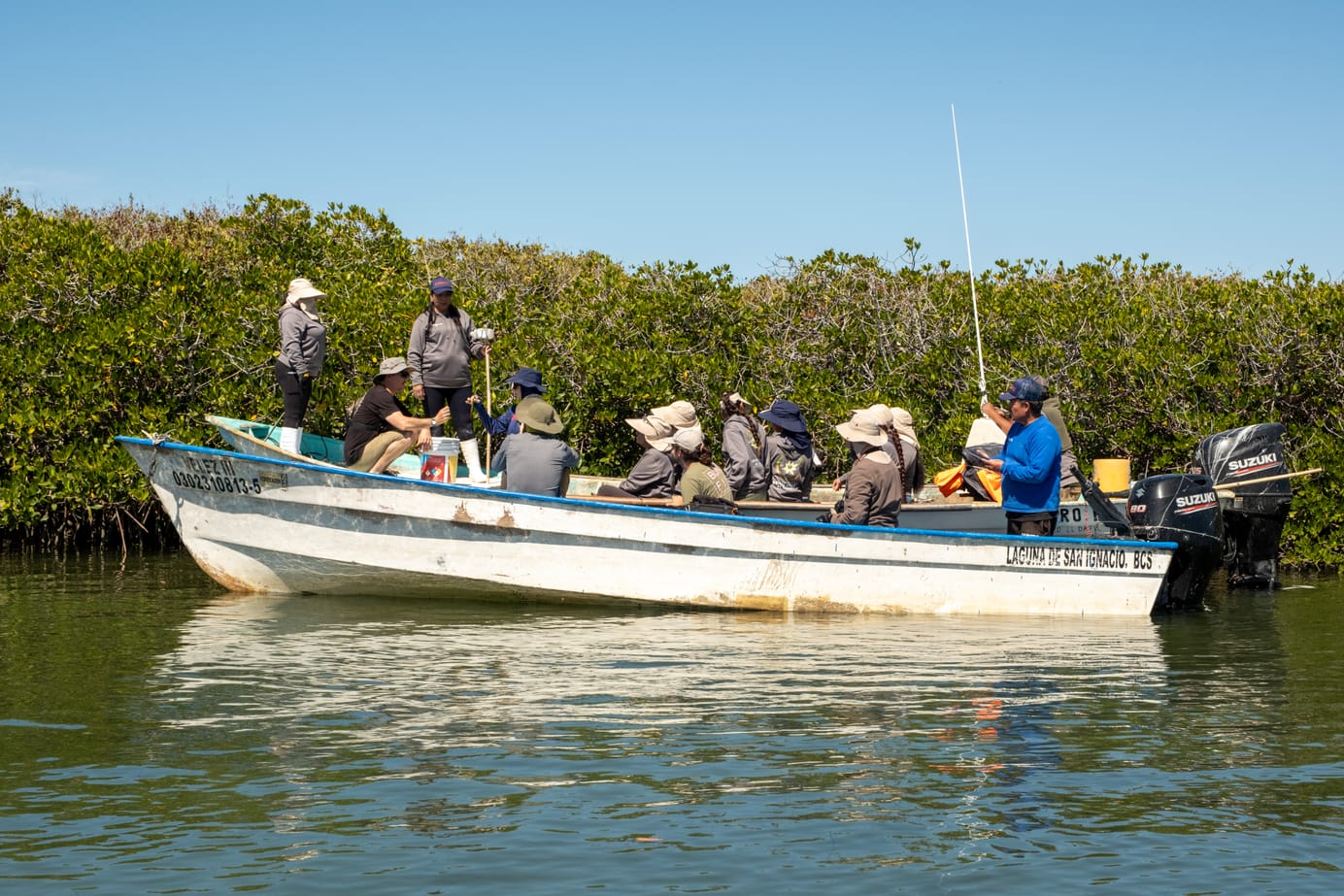
A Trip with SeaTrees and Wildcoast
In honor of Earth Day, I want to share the story of a recent trip to Southern Baja with our newest impact partners, SeaTrees and WILDCOAST.
It all began over one week in February when I was serendipitously connected with people from both organizations, which I had been following for years. While they are two distinct entities, they are both founded by surfers and collaborate on several projects across California and Mexico.
The opportunity to join the trip to visit a mangrove restoration project in El Dátil, just two hours north of Scorpion Bay, was too good to pass up. I met Michael Stewart, Co-Founder of SeaTrees, at LAX and we hopped on a flight to Loreto to meet up with a rad crew from WILDCOAST, as well as Benjamin Soto and Andrés Valencia, filmmakers documenting the project, from Zenith Adventure Media.
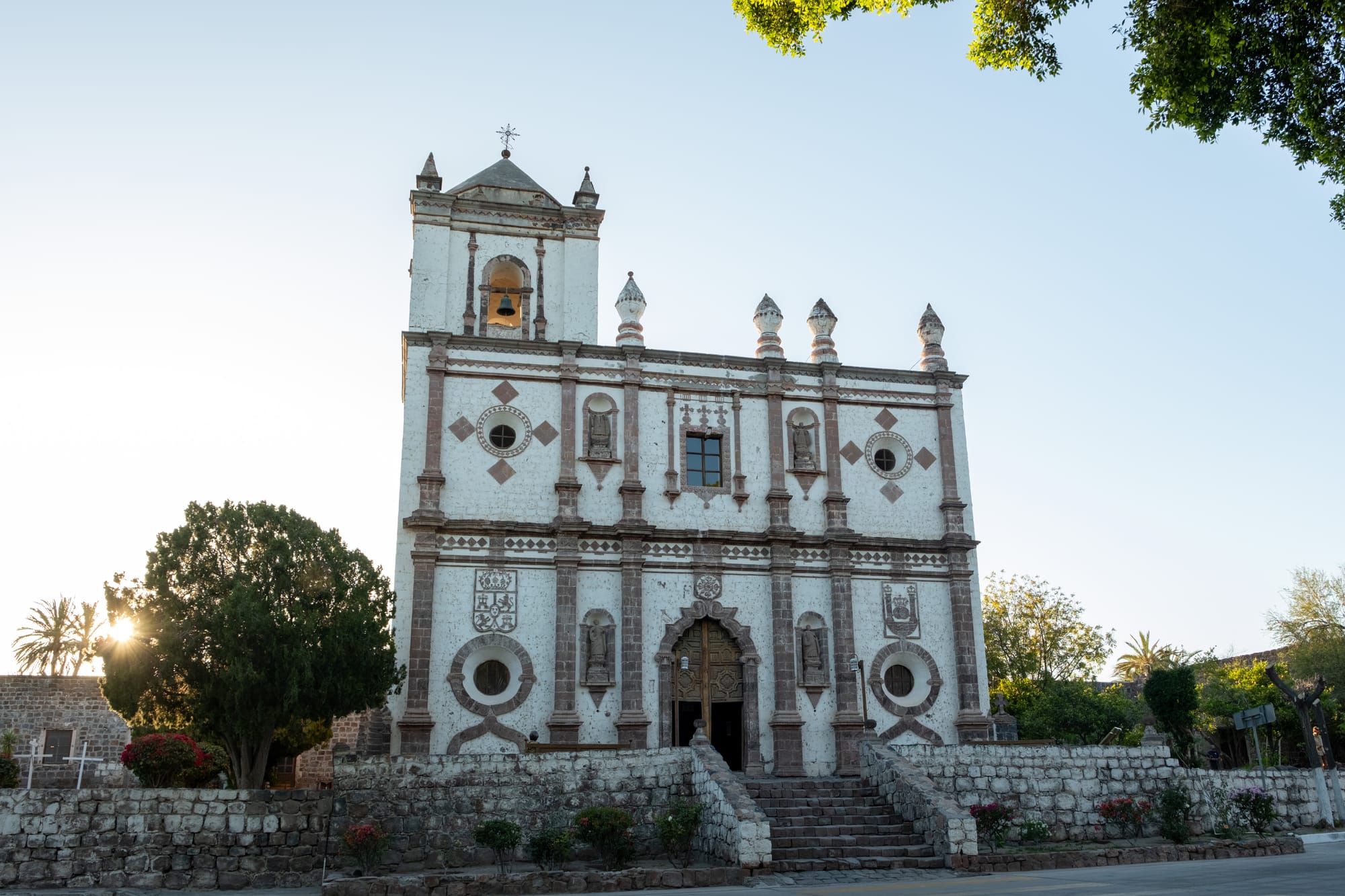
From Loreto we traveled by van for 6 hours, passing through several small towns and oases like San Ignacio and Muleje. If you have never visited a desert oasis, they look like what you saw in storybooks–lush green palm trees and lagoons in an otherwise arid landscape of cacti, dust, and tumbleweeds. San Ignacio is a sleepy town centered around a plaza with a charming old church and a shop selling the best date pie we had ever tasted.
Due to a lack of accommodation options in El Dátil, we stayed 2 hours north, at Antonio’s Eco Cabins. Located on the shore of Laguna San Ignacio–a UNESCO World Heritage Site and the world’s last undeveloped California gray whale breeding lagoon. Each morning after breakfast we would load up and make our way through the desert taking in the views and contemplating life. Each evening we would do our best to navigate a seemingly endless array of random roads spiraling out into the night, a true labyrinth that had us backtracking and second-guessing our every move.
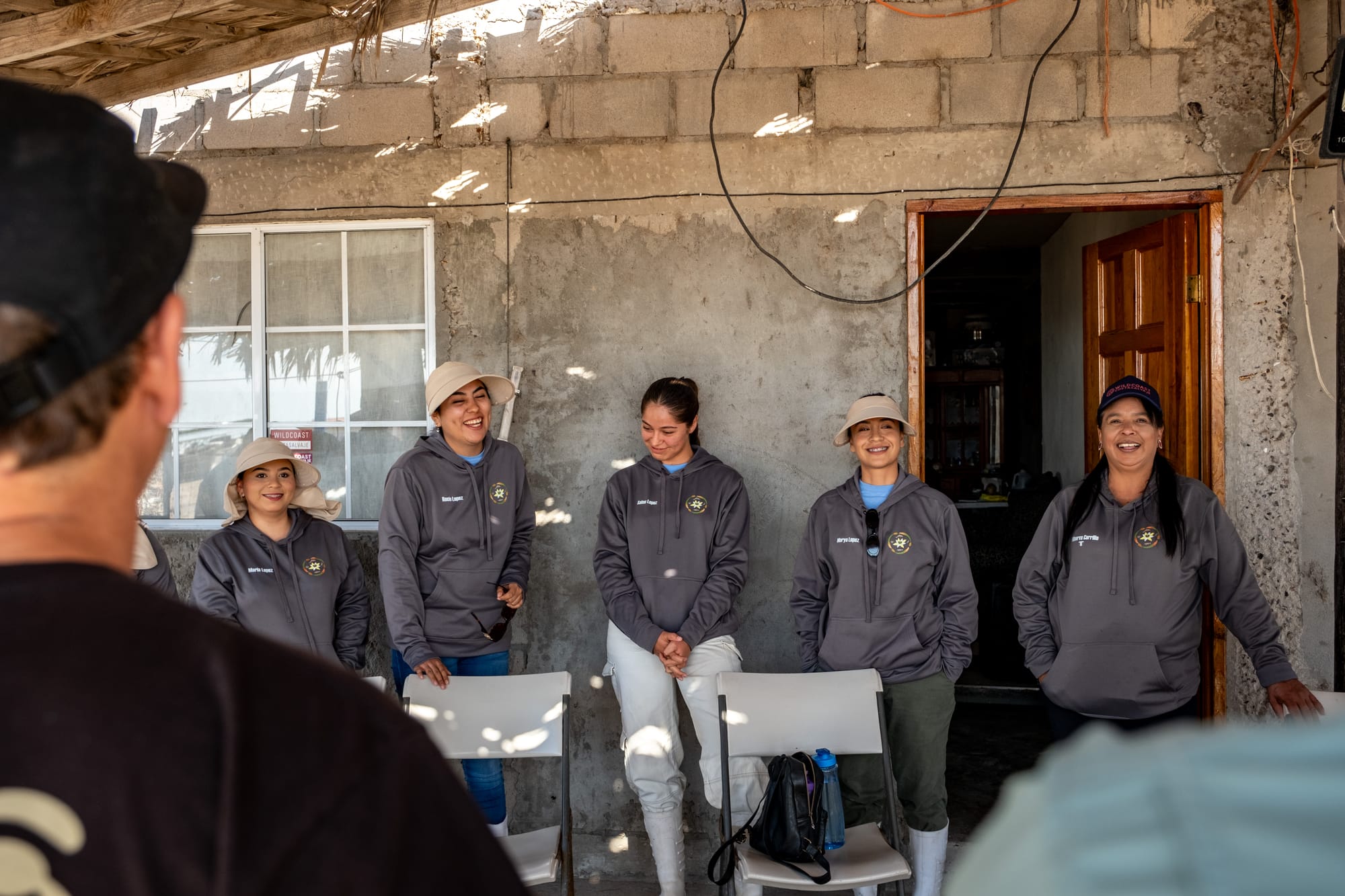
On our first morning, we had a meet and greet with the women-led conservation group that runs the restoration operations, Mujeres de El Dátil ("women of El Dátil"). Minerva Carrilo Larios leads 16 women in harvesting the mangrove propagules (seedlings) and planting them in areas degraded by hurricanes. Like other mangrove forests, these trees play a vital role in maintaining the health of the surrounding ecosystem and serve as a major carbon sink.
As we set out for the day, I received a comprehensive crash course on the importance of such an ecosystem and the work being done to protect it. The red and white mangroves in Baja are unique for they survive in such a hostile environment, which sees very little precipitation in a year. They are smaller and grow slower, than their tropical cousins but it is easy to see that without them, life in the lagoon, and surrounding area, wouldn't be possible.
The old saying, “When it rains, it pours”, is especially true in Southern Baja where rainfall happens once or twice a year from tropical storms that spin off Mainland Mexico and pass over the peninsula with the potential for heavy downpours, floods, and huge waves. Occasionally these storms develop into powerful hurricanes that can destroy anything in their path, entire communities included.
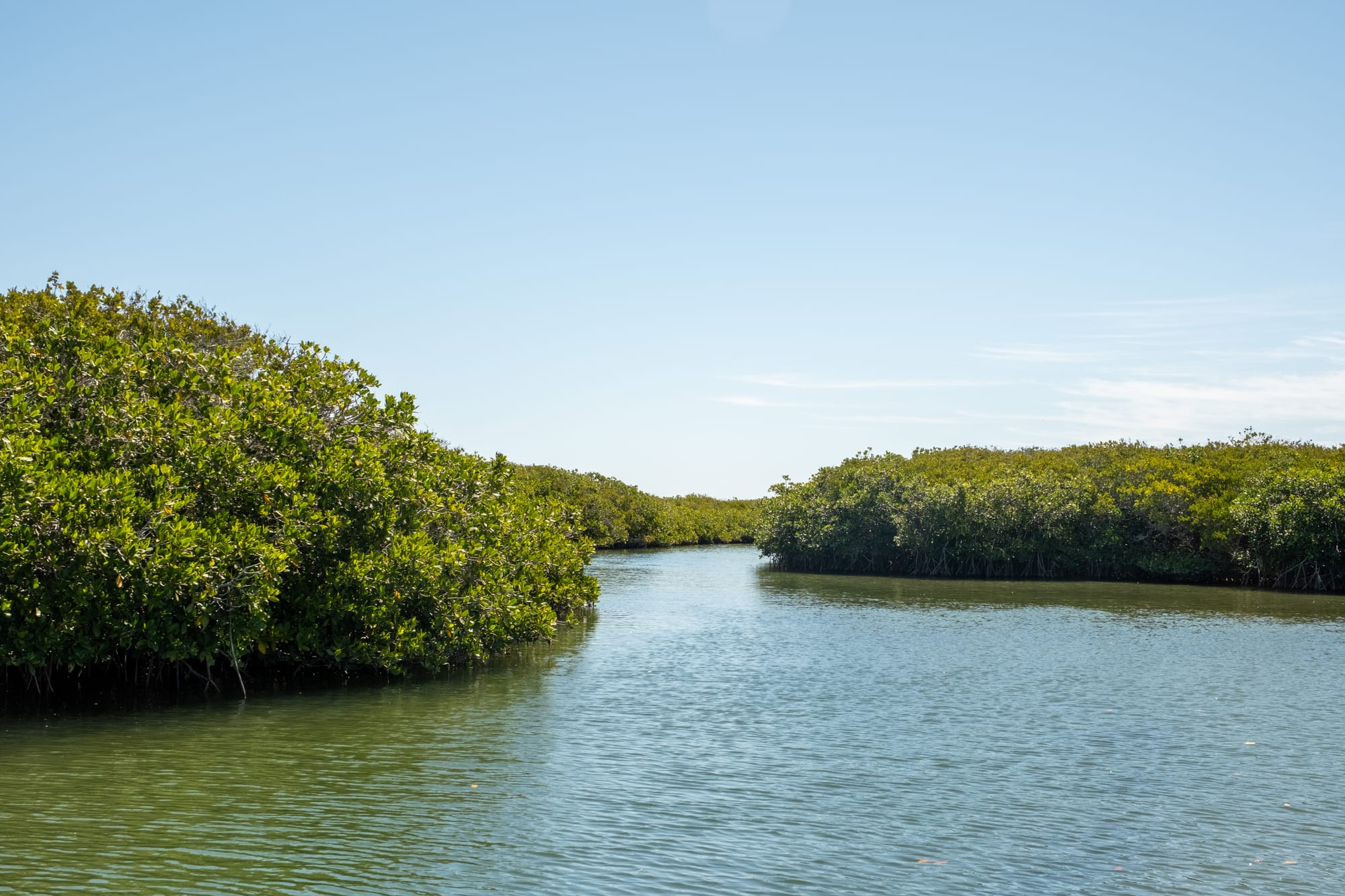
In addition to supporting the lagoon ecosystem, the mangroves also serve as an important buffer against these storms helping protect nearby communities, like El Dátil, from powerful waves and storm surges. I saw firsthand how the restoration work is strategically done in areas affected by past hurricanes to bolster the resilience of those mangrove patches. The community benefits from this in several ways, from the connection with each other to the realization that this work will support the livelihood of future generations.
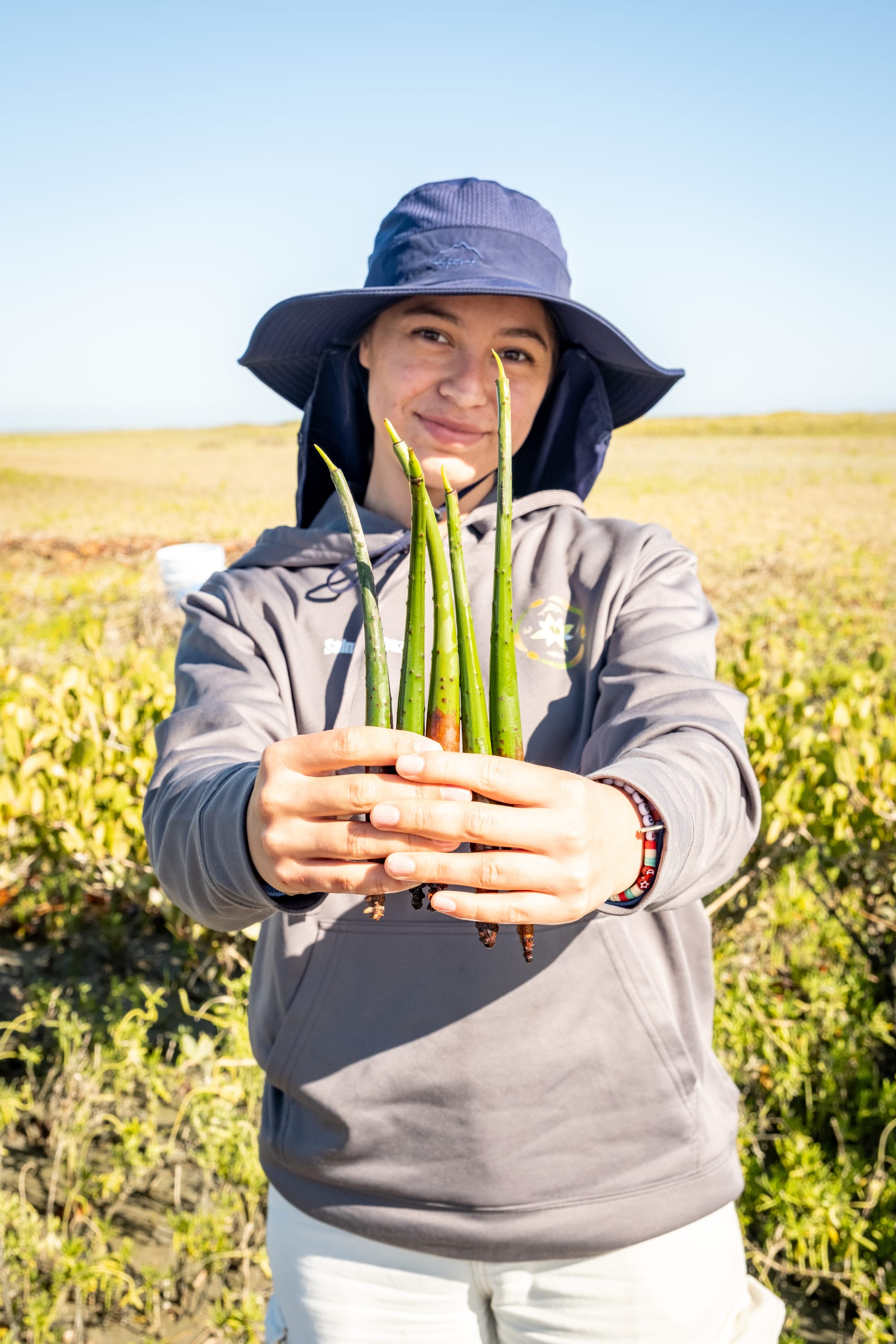
While the first day was for gathering the propagules, the second was all about planting. Throughout multiple sites, the women worked quickly and efficiently planting hundreds of propagules in rows spaced out by 60 centimeters. From the inception of the project in 2017, the women have received training and guidance from Francisco Martínez Vázquez (Fran), the Mangrove Conservation Director for Wildcoast. Fran was cheerful and beaming, fully in his element, and happy to talk about their progress and the lessons they had learned.
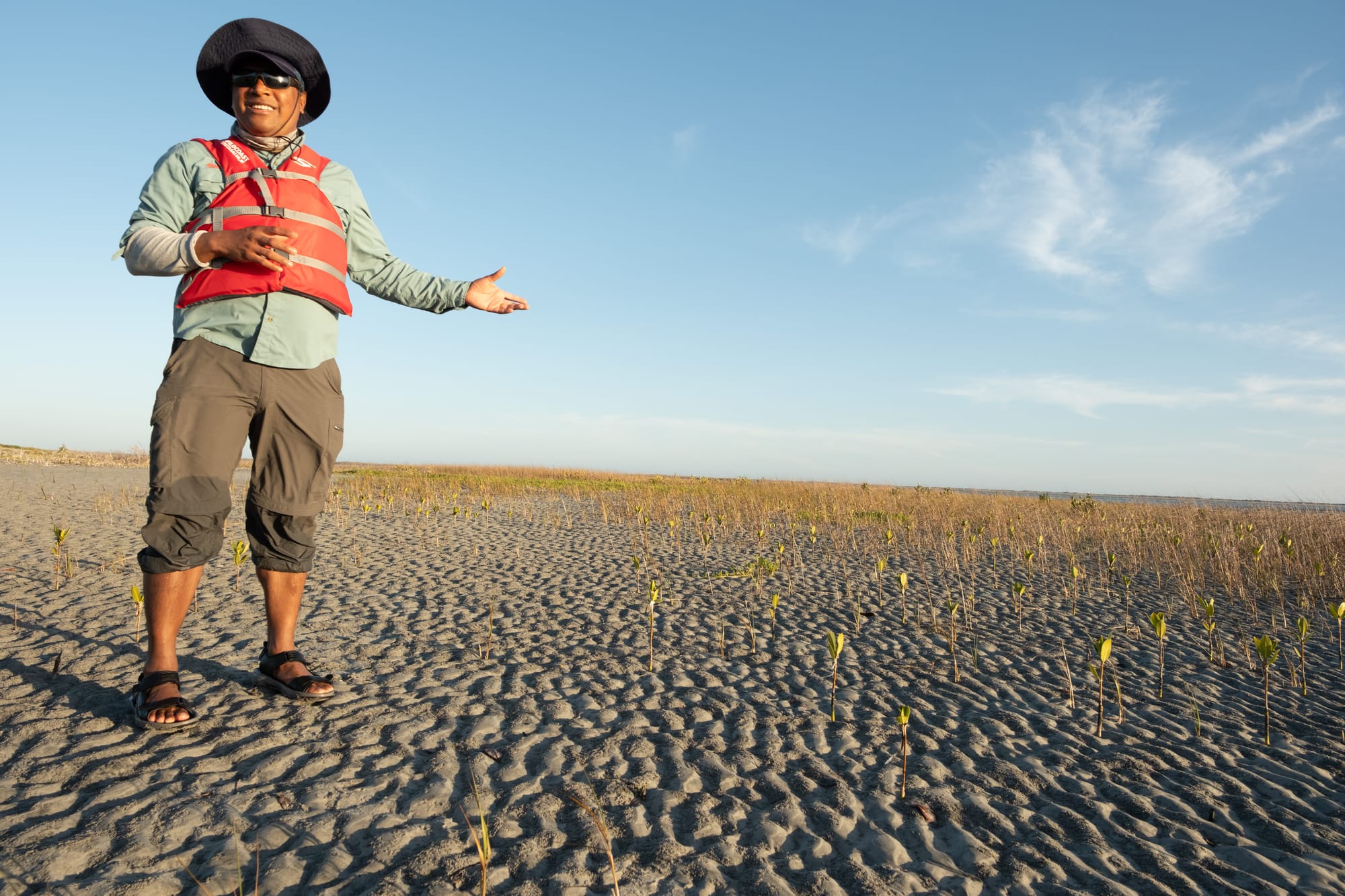
I'd be lying if I didn’t tell you that Michael and I got in a surf session before the day’s work commenced. Hugo, Minerva’s husband, boated a small group of us out to the mouth of the estuary where we made our way down the beach to find our peak. We were miles and miles from the nearest surfers and paddled out to a lineup empty aside from a few dolphins enjoying the 3-4 foot waves.
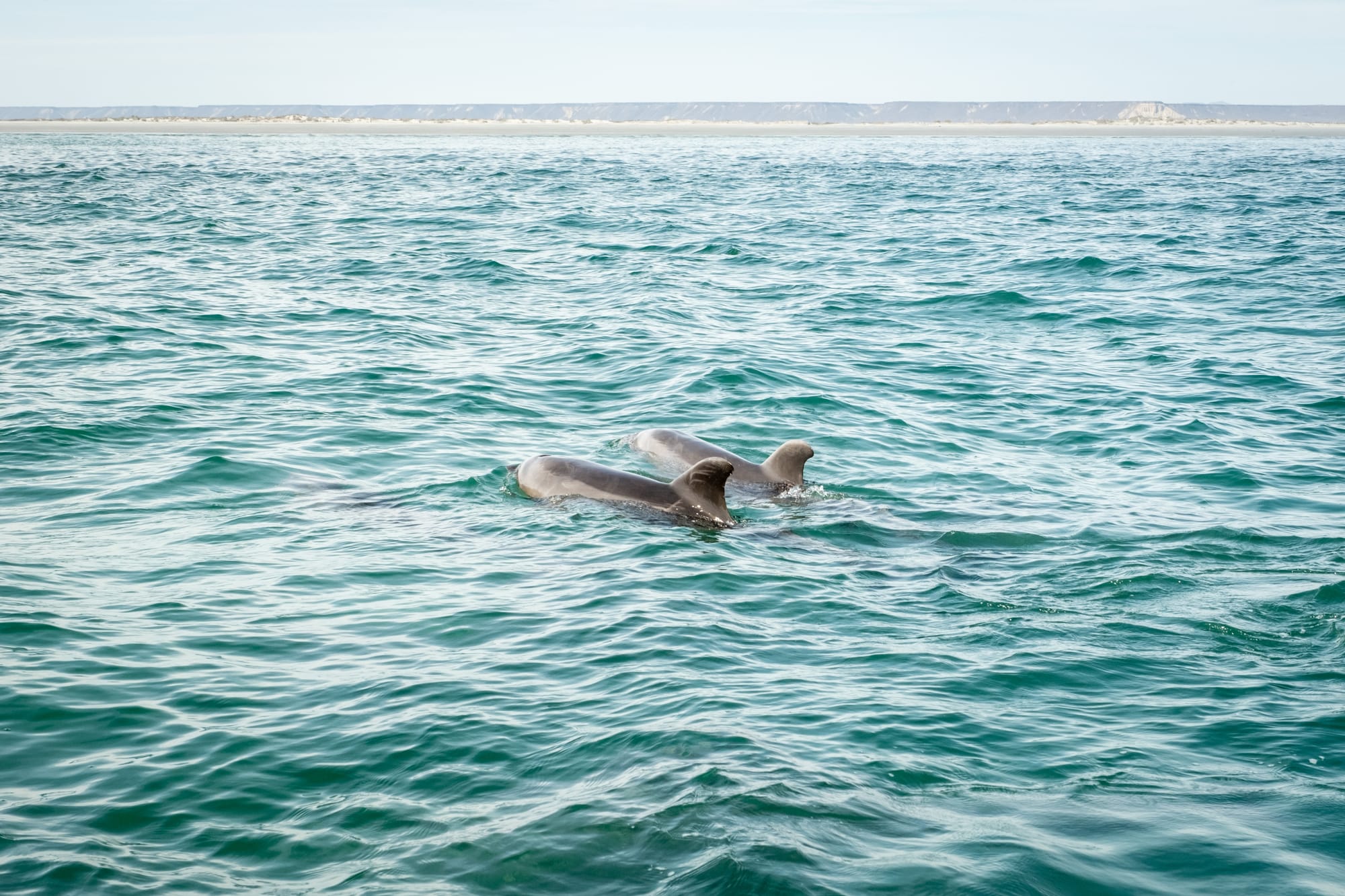
Later that day, after planting the propagules, our 3 boats returned to the mouth of the estuary and waited for dolphins to appear. It wasn’t long before the local pod showed up and we were in for an hour of nonstop joy as the dolphins swam and played around our group. It may sound far-fetched to some but this pod has developed a close bond with the community. The fishing boats often toss out bits of fish while cleaning them for that evening’s dinner and the dolphins have learned that there may very well be an afternoon delight when they hear the boats coming to shore.
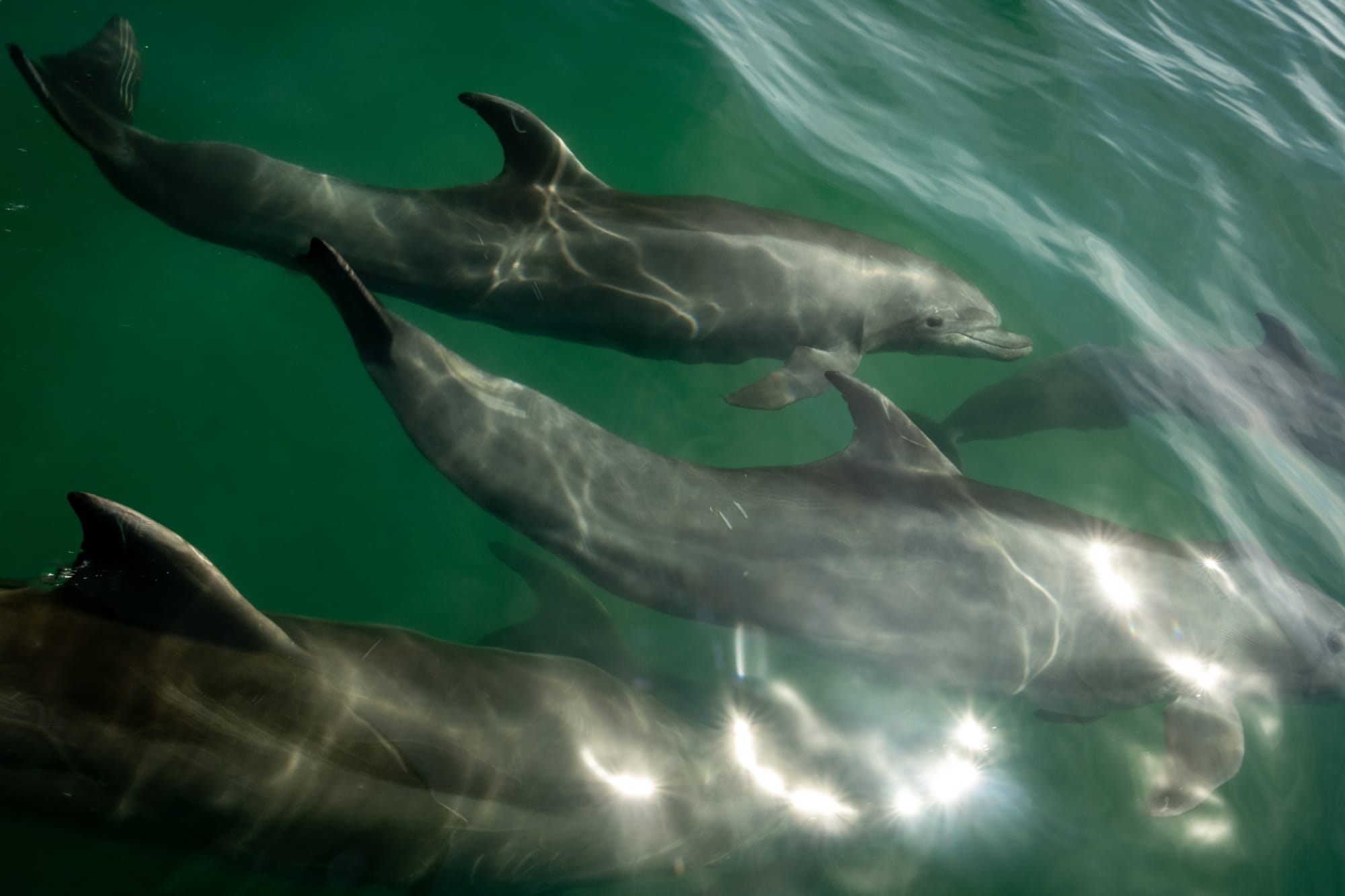
The experience filled me with gratitude for the women of El Dátil, who welcomed us so graciously into their world, and for SeaTrees and WILDCOAST, and, for our very planet, the one we call home. Earth.
The next day, Michael, Ben, Andrés, and I said goodbye to our friends from Wildcoast and caught a ride with Hugo to San Juanico where we would be greeted with the first south swell of the season at Scorpion Bay…but that is a story for another day.
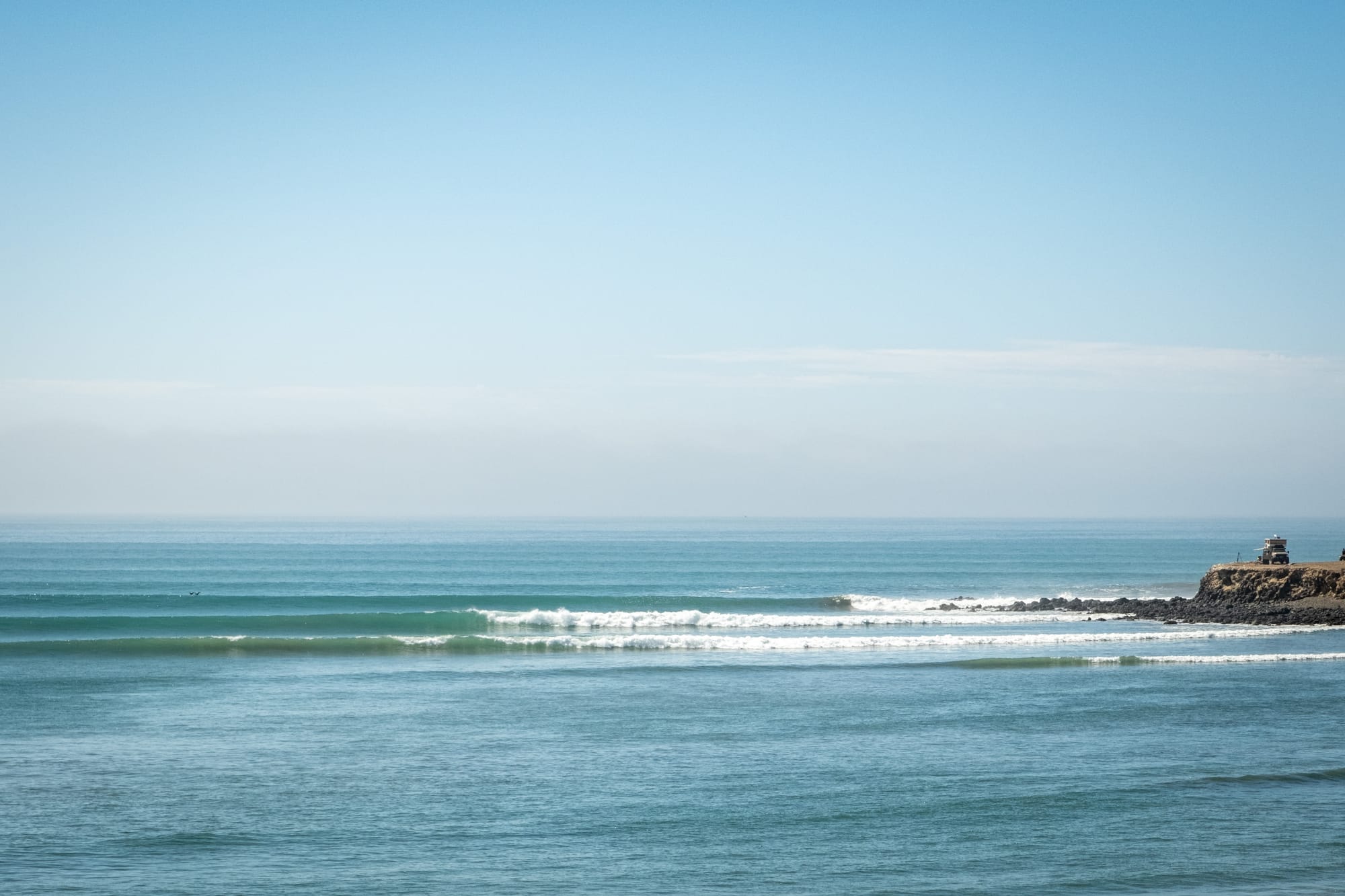
As a proud partner of SeaTrees, Thermal pledges to plant 100 trees each month designated for the project at El Dátil. Our partnership with WILDCOAST will include bookable travel experiences, similar to mine, to their projects in Oaxaca, Cabo, and Laguna San Ignacio as part of our soon-to-come Southern Baja Adventure.
Gracias.

